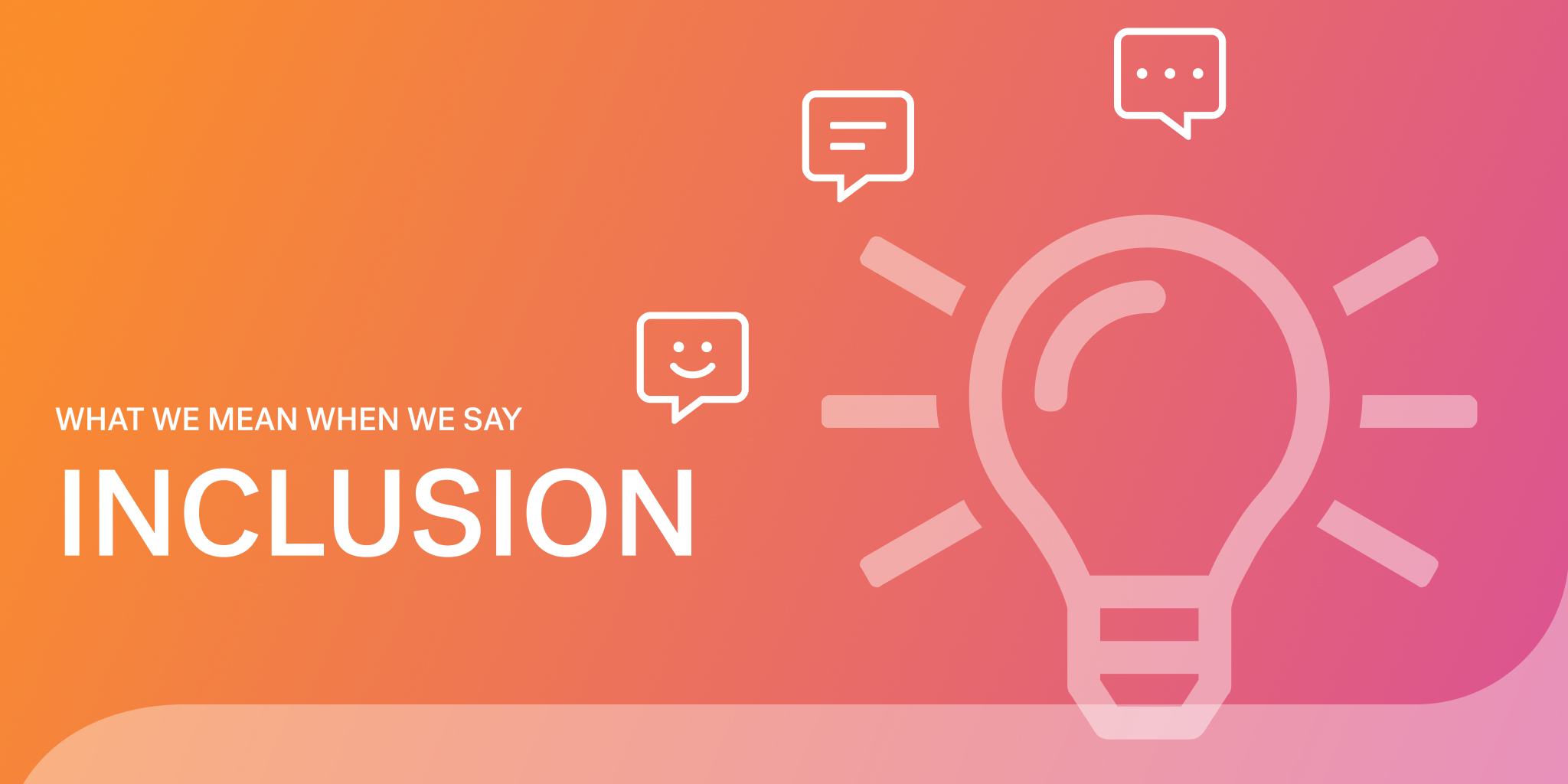What we mean when we say inclusion

More companies than ever are committing themselves to being a place that welcomes, includes, and supports all people. They seek to attract a more diverse workforce, and build a more equitable and inclusive work environment. This phenomenon is ubiquitous enough now that "diversity, equity, and inclusion" has become a regular program at companies big and small. With its growing importance, it quickly garnered its own acronym: "DEI."
Progress in the DEI domain is multi-faceted; it means dismantling deeply rooted and unconscious prejudices, and so it must be thoughtful and deliberate, in both actions and words.
In this blog, we break apart the acronym and present our thinking on what an organic, holistic approach of inclusion and belonging should look like. As it turns out, there is another dimension to inclusion beyond being open to all, and that can feel backwards or counterintuitive. It’s helpful to reconsider your understanding of what it means to create a diverse and welcoming workplace—we’ll walk through it together.
Going beyond the acronym: defining diversity, equity, and inclusion
Diversity, equity, inclusion, and belonging are all related, but different, things. It’s easy to forget this when they are so often grouped together and hidden behind an acronym. And like many other buzzwords, when they get thrown around so often, people start to use them interchangeably, and they begin to lose their meaning.
We won’t let that happen, and you shouldn’t either. Here’s how we think about each within a company.
Diversity: the presence of difference within an organization; it’s often used to mean a diversity of identities. Importantly, diversity only exists within a group; it isn’t used to describe an individual. You can’t have a “diverse person,” only a diverse group of people.
Equity: these are the norms, fundamentals, processes, and policies that give everyone the same access to opportunity. This might sound simple, but it’s not about offering everyone the same things; it’s about addressing different advantages and barriers different people face, recognizing we don’t all start from the same place. It is correcting and addressing those imbalances and loopholes.
Inclusion: the act of ensuring that everyone, regardless of their identity, feels like they genuinely belong, are seen, valued, relied on, and empowered to thrive. Belonging is the individual’s experience in an inclusive culture, where one feels that not only are different views present, included, and appreciated, but also that they are able to thrive as their authentic self as part of a larger community.
Our concept of inclusion is aimed at achieving belonging for all people who work (or are considering working) at your company.
At Textio, when we talk about creating an inclusive culture, we’re using a wide definition of inclusion. We see an inclusive culture as one in which you have people from different backgrounds (diversity), process and systems that afford people the same opportunities (equity), and an environment that fosters a sense of belonging and community at every touchpoint. Our concept of inclusion is aimed at achieving belonging for all people who work (or are considering working) at your company.
Building an inclusive company is more than just one policy, one tool, or one person. Everything a company does impacts its culture and how inclusive it is. And everyone at a company has a role to play in creating that culture.
Inclusion takes many forms
Inclusion isn’t a subset of work or a standalone initiative; it exists in everything a company does. There are some programs that are specifically aimed at impacting inclusion, but there are a lot of things your company might do that wouldn’t be considered “traditional DEI work” but still matter.
Consider, for example, working parents and how your company supports them. Maybe you offer parental leave benefits and flexible schedules. This might not be something that’s traditionally considered inclusion work, but it can directly impact whether a working parent feels seen, understood, and supported.
Inclusion shows up in many places—in your company practices, policies, communication, and accountability measures. Getting any one of these right alone won’t make for a truly inclusive culture, but each is an area in which you can be more inclusive—to create and build that sense of belonging for more people. Textio specifically helps you find the most inclusive language for your talent content and is a critical part of any company’s approach to inclusion, but it cannot solve the puzzle of inclusion by itself. All of these pieces are important and impactful.
A new approach to inclusion
As the team at Textio deepens our study of workplace culture and evolves our language guidance based on a data set of nearly a billion documents and peer-reviewed academic research, we are constantly refining and expanding our approach to inclusion.
Our starting point is this: Engaging people from a diverse set of backgrounds is a critical step in the journey toward a long-term, sustainable culture of inclusion and belonging at any company. But how do you ensure you sustain that inclusive culture over time? You may hire from a more diverse group of people, but if the people you bring in don’t experience a real sense of belonging when they join your company, they’re not likely to stay for long. The truth is there’s only one way to build an inclusive culture that will stay inclusive: You have to attract people who genuinely want to be inclusive.
Thus, at Textio we offer a new approach to inclusion that encompasses both a state of being and a course of action: One must be inclusive and create inclusion. Both are powerful and both are necessary—but the latter piece can be overlooked or misunderstood, particularly from a communication standpoint. Thoughtful language is a lever you can pull to impact both of these aspects of inclusion.
This is a modified excerpt from the guidebook "Rethinking your approach to inclusion." Download the full guidebook here.
Thanks to Eleanor Chestnut, Tim Halloran, Becky Auerbach, Andrew Violante, and Cassie Sanchez for their contributions.